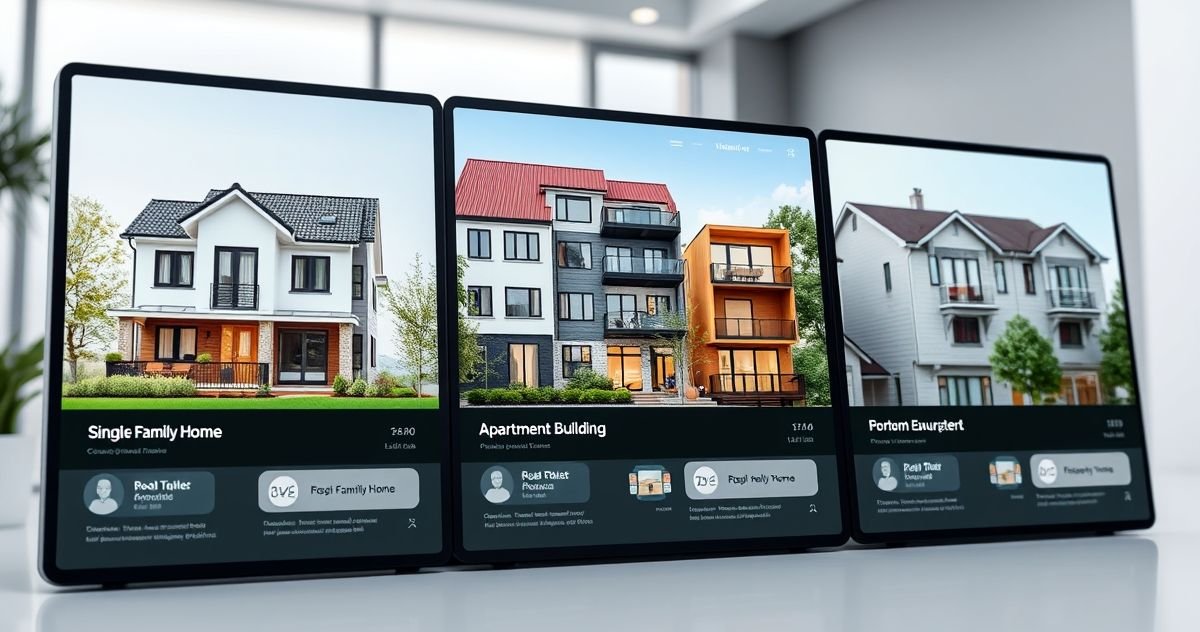Navigating real estate listings can be confusing without understanding residential property type classifications. Terms like “condo,” “co-op,” “townhouse,” and “single-family home” don’t just describe places to live — they define how properties are owned, financed, and managed.
Think of these classifications like vehicle types: a sedan, SUV, and truck all serve different purposes and come with varying costs and rules. Similarly, a property’s classification impacts mortgage eligibility, insurance policies, and maintenance duties.
How Residential Property Classifications Work
Classifications focus on three main factors: structure, ownership, and density of living units.
- Structure: Is the property standalone or connected to others (e.g., shared walls)?
- Ownership: Do you own the land and building outright, or own shares in a corporation (like a co-op)?
- Density: How many separate units make up the property?
These distinctions help lenders assess risk, insurers determine coverage, and owners understand their responsibilities.
Common Residential Property Types Explained
Single-Family Detached Home (SFH)
A standalone residence with no shared walls. Owners have fee simple ownership, meaning they own both the structure and the land. Maintenance and repairs are solely the homeowner’s responsibility.
Multi-Family Residence (2-4 Units)
Includes duplexes, triplexes, and fourplexes with multiple separate units under one roof or lot. They remain classified as residential for mortgage purposes, often used for “house hacking”—living in one unit while renting others. Properties with five or more units usually fall under commercial real estate rules.
Condominium (Condo)
You own your individual unit’s interior and share ownership of common areas (hallways, pool, land) through a Homeowners Association (HOA). Condo owners pay monthly HOA fees for maintenance of shared spaces and must comply with HOA rules. For insurance, condo owners typically need an HO-6 policy to cover their unit’s interior.
Cooperative (Co-op)
Buying a co-op means purchasing shares in a corporation that owns the building, granting you a proprietary lease to live in a specific unit. Co-op board approval is required, often involving rigorous financial checks.
Townhouse
A hybrid category where you usually own the structure and land beneath it but share walls with neighbors. Townhouses often belong to HOA communities that manage common amenities.
Quick Comparison Table
| Feature | Single-Family Home (SFH) | Condominium (Condo) | Cooperative (Co-op) | Townhouse |
|---|---|---|---|---|
| What You Own | Structure and land | Interior unit | Shares in corporation | Structure and land beneath |
| Shared Walls | None | Yes | Yes | Yes |
| Maintenance | Owner handles all | Owner handles unit; HOA for common areas | Owner handles unit; co-op manages building | Owner handles most; HOA may cover some |
| Fees | Rarely | Mandatory HOA fees | Mandatory maintenance fees | Often HOA fees |
| Purchase Approval | Lender approval | Lender approval | Co-op board approval | Lender approval |
Why Property Classification Matters
Financing: Lenders apply different criteria depending on the property type. For example, co-op loans require board approval and have stricter underwriting. Condos require lenders to review HOA finances (see Condominium Approval Process) before issuing loans.
Insurance: Insurance varies—single-family homes typically need comprehensive HO-3 or HO-5 policies, while condos require HO-6 “walls-in” coverage, with the HOA covering exterior elements. Understanding insurance needs can prevent coverage gaps.
Ownership Rules: Single-family homeowners generally have more freedom over property changes. Condo and co-op owners face restrictions governed by associations and boards, often regulating renovations, pet policies, and exterior appearances.
FAQs
Q: How can I verify a property’s classification?
A: Check the real estate listing details, public property tax records, or consult your real estate agent for MLS data.
Q: Does classification affect resale value?
A: Yes. Single-family homes often appreciate steadily due to land ownership. Condos and co-ops may vary based on location, market health, and association management.
Q: Are townhouses and condos the same?
A: Not necessarily. Townhouses usually include land ownership, while condo-style townhouses mean you own only the unit interior and share land ownership.
Understanding residential property type classifications empowers you to make informed real estate decisions, ensuring your financing, insurance, and homeownership goals align.
For more on mortgages and housing expenses, visit our Mortgage Glossary and Homeowners Association Guide.
For official source details on condo financing, see Fannie Mae’s Condominium Approval Process guidelines.

